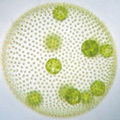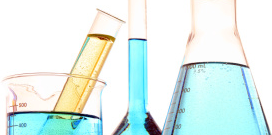The study of cell origins primarily involves the question of how cells became individual units, separate from the external environment and capable of producing energy to sustain themselves. Cellular metabolism is the set of biochemical processes by which energy is either created or used in the cell, and energy resources in eukaryotic cells are regulated by two well-studied organelles: the mitochondrion and the chloroplast. Due to the widely held contention that these organelles once existed as separate organisms, the study of cell energy is inherently linked to the study of cell origins.
How do scientists study the origin of cells, a process that obviously occurred long before the origin of humans? Genomic comparisons between Archaea, Bacteria, and Eukarya, the three main categories of organisms, yield clues. In fact, a prevailing hypothesis emerging from genomic and other comparisons is that the first eukaryote actually evolved from collaboration between an archaeon and a bacterium. Scientists study the structure and function of mitochondria and chloroplasts as well as their fascinating separate genomes to see what evidence might be left of the entities they once were. The focus on the origin of the cell is not restricted to the study of energy-generating organelles. Indeed, scientists spend much time and debate on the fundamental question of how gradients of protons separated by cell membranes enabled energy creation in primordial conditions. In addition, studies of cell origin focus on the evolution of multicellularity, the state of cells cooperating to form a single organism, a large step toward the creation of the vertebrates and invertebrates we know today. Comparative genomics has helped map out these paths to multicellularity and diagram evolutionary divergence as well as convergence.
Aside from being the basic structures of life, cells have evolved the impressive capability of modifying organic molecules to make other useful organic molecules. This set of sequential modifications, largely mediated by enzymes, defines cell metabolism. One approach to the study of metabolism is to ask how biochemical pathways have evolved, what organisms share the same pathways, and which do not. Looking at evolutionary relationships between enzymes in biochemical pathways can help us deduce evolutionary relationships of microorganisms. Another approach is to focus on the starting point: Where do cells get their nutrient resources? Do they generate their own energy, or do they rely on other organisms for nutrient courses? Among those that generate their own energy are the photosynthetic organisms — cyanobacteria and plants. Other organisms consume carbohydrates and other organic molecules produced by these pioneering photosynthetic organisms. Therefore, all life is in some way, directly or indirectly, reliant on the energy produced by photosynthetic organisms.
The study of cell energy and metabolism has broad implications beyond bacteria, plants, and the organisms that consume them. The energy-generating mechanisms of photosynthetic organisms have the potential to be a renewable energy resource for humankind, a prospect that looks more and more appealing as fossil fuel resources become depleted. Indeed, the investigation into unlocking the potential of cultivated algae or crop agriculture for the generation of biofuels is an exciting new area for discovery, ready to be tackled by innovative young scientists.
Image courtesy of Aurora M. Nedelcu.




